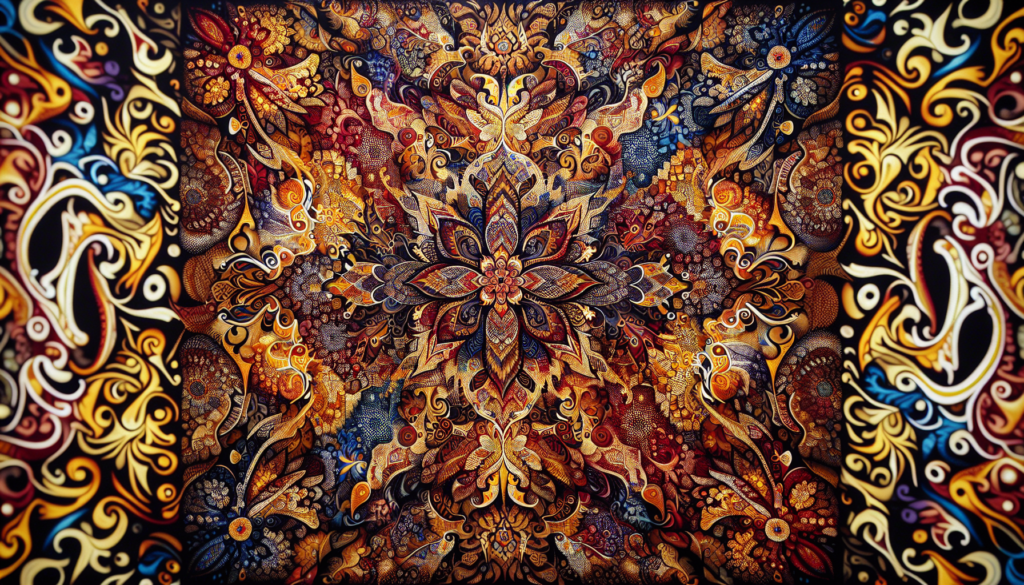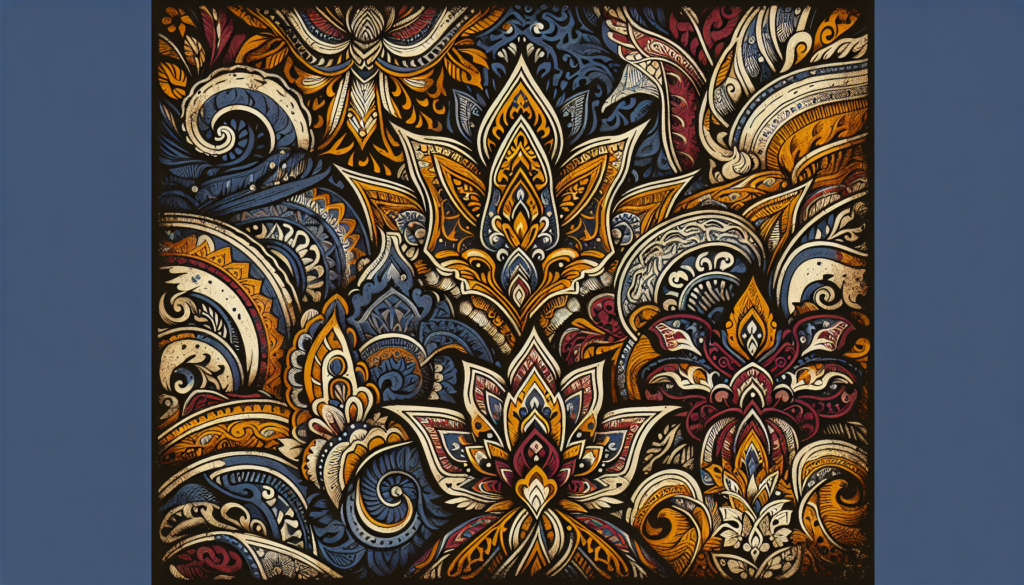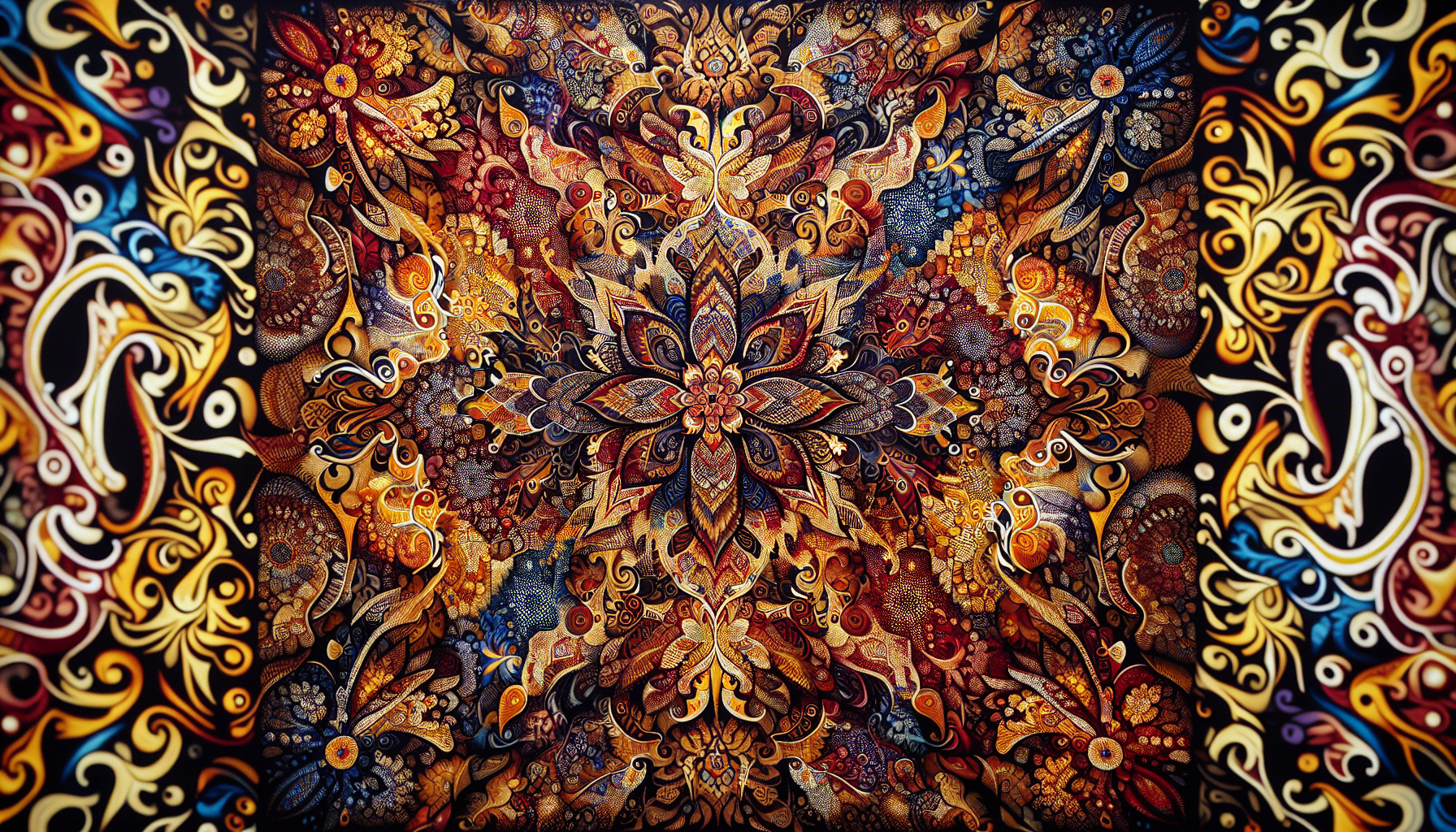Have you ever marveled at the intricate designs and vibrant patterns of batik paintings and wondered about the method behind such artistry? The batik method of painting is a traditional art form known for its complexity and intricate designs, often characterized by stunning colors and patterns. This technique has transcended cultural boundaries, becoming both a symbol of heritage and a contemporary art form. Let’s delve into its intricacies to better appreciate the artistry involved.

Understanding Batik and Its Origins
The batik method is a wax-resist dyeing technique used on textiles. The term “batik” is derived from the Javanese words “amba,” meaning “to write,” and “tik,” which means “dot” or “point.” This is an apt description of the method, as it involves drawing designs with wax before adding color through dyeing.
Historical Background
Batik has a rich history dating back over a thousand years, with its origins disputed among historians. Primarily associated with Indonesia, particularly the island of Java, batik has been practiced in various forms throughout Africa, Asia, and the Middle East.
Cultural Significance
Batik holds cultural importance in Indonesia, often used in garments for ceremonial purposes and in daily attire, symbolizing various attributes and social statuses. Each region has distinct batik patterns that represent local customs and philosophies.
The Methodology of Batik Painting
Batik painting is distinguished by its unique application of wax and dye. It is a meticulous process requiring skill and patience.
Essential Materials and Tools
The art of batik requires a few specialized tools:
- Cloth: Typically, cotton or silk, as these fabrics absorb dye well.
- Wax: A combination of paraffin and beeswax is common, providing the right balance for application and removal.
- Dyes: Various natural or synthetic dyes are used depending on the desired outcome.
- Canting: A pen-like tool for fine, intricate designs, which drips molten wax onto the fabric.
- Brushes and Stamps: Used for larger designs or to expedite the waxing process.
- Dyeing Container: For immersion of fabric in dyes.
The Process of Batik
Preparation
The batik method begins with preparing the cloth, which involves washing and drying it to remove any impurities. This ensures that the wax adheres properly, and the dyes absorb evenly.
Designing with Wax
Artists use the canting or brushes to apply wax over the areas intended to resist dye. This step demands precision and creativity, as the wax creates the design outline. For repetitive patterns, stamps called “cap” are used.
Dyeing
Once the wax design is complete, the cloth is submerged in a dye bath. The non-waxed areas absorb the dye, while the waxed sections resist it, maintaining their original color. This step may be repeated with different colors, creating layered, multicolored effects.
Removing the Wax
After dyeing, the wax is removed by boiling the fabric or ironing between layers of absorbent paper. This reveals the intricate batik patterns in their full glory.
Techniques of Batik
Different regions and artists have their techniques, leading to distinct styles and effects:
- Canting Batik: Originates from Java and involves detailed hand-drawn patterns using the canting tool.
- Cap Batik: Utilizes copper stamps for faster production of repetitive patterns.
- Combination Batik: A mix of traditional hand-drawn and stamped techniques, allowing for complex designs.
The Evolution of Batik
While traditional methods remain popular, batik has evolved with contemporary art and fashion trends.
Modern Techniques and Innovations
Innovations in batik include the introduction of synthetic dyes and new wax formulations, which offer brighter colors and more durable patterns. Artists also experiment with non-traditional materials and digital tools, expanding batik’s scope in art and design.
Batik in Fashion and Art
Batik has gained international recognition, finding its way into fashion runways and art galleries. Designers blend traditional motifs with modern styles, celebrating cultural heritage while appealing to contemporary tastes.
Challenges and Preservation of Batik
Despite its popularity, traditional batik faces challenges, particularly in terms of production and sustainability.
Preservation Efforts
There are concerted efforts to preserve batik as an intangible cultural heritage. This involves education in art schools, workshops for young artisans, and efforts to document traditional patterns and techniques.
Sustainability Concerns
The batik industry grapples with environmental concerns, mainly due to chemical dyes and wax disposal. Eco-friendly practices are being encouraged, with an emphasis on using natural dyes and sustainable materials.

The Significance of Batik in Contemporary Society
Batik’s impact extends beyond its visual appeal. It serves as a cultural touchstone, a link to heritage, and a medium for personal and social expression.
Cultural Identity and Expression
For many, batik is a symbol of cultural identity. Wearing or displaying batik goes beyond personal style; it is a testament to cultural pride and heritage.
Artistic and Economic Influence
Batik’s influence on art and economy cannot be understated. It supports communities through artisan crafts and tourism, offering a livelihood for those dedicated to this traditional art form.
Conclusion
The batik method of painting is more than just an art technique; it is a cultural legacy that continues to inspire artists and admirers across the globe. Understanding its methodology, history, and evolving significance enriches our appreciation and respect for this intricate art form. Whether observed in traditional fabrics or modern art pieces, batik holds a timeless allure, a testament to human creativity and cultural heritage. As you explore this time-honored technique, consider the myriad stories each piece tells, and perhaps, how you might incorporate this rich tradition into your own artistic endeavors.



